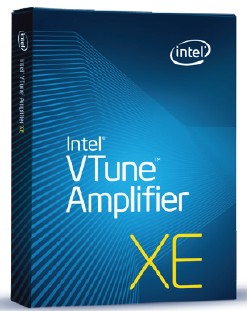|
適用於 Intel® 平台與技術的 Intel®
軟體研發產品
Intel VTune Amplifier XE for Windows* |
|
 |
 |
產生速度更快的程式碼 |
 |
 |

|
Is your software sluggish? Are you not seeing the performance scaling youexpected on multicore processors? How do you diagnose the cause of poorperformance and find a solution?
IntelR VTune? Amplifier XE is our newest performance profiler that builds on the success of IntelR VTune? Performance Analyzer. It includes all the capabilities of IntelR Parallel Amplifier plus a number of advanced capabilities for developers needing to dig deeper. |
|
 |
 |
功能與優點 |
 |
- Accurate performance data—Without data you are just guessing about the location of the
performance bottleneck and can easily waste a lot of time.
- Easy setup—We' ve added a number of pre-defined performance profiling experiments to the full custom capabilities of earlier versions of Intel VTune analyzer. This makes it easier to get great profiling information without needing to know microarchitectural details.
- Powerful profile analysis—Getting good profiling data is only the first step. We' ve added anumber of features like the timeline, filtering, and frame analysis to help turn that data into actionable information.
- Tune threaded and non-threaded code—Identify the threads and synchronization objects that impact performance. See the distribution of work to threads and pinpoint load imbalances.
- Low overhead—Collecting data always has a cost. Intel VTune Amplifier XE keeps the overhead low, making data collection faster and the results more accurate.
- Normal production build—Use a production build with symbols from your normal compiler or assembler. No special builds are required.
- C++, Fortran, assembly, and more—Use compilers from any vendor (Microsoft*, GCC, Intel) that follow platform standards.
- IntelR processors and non-IntelR processors—Many of the profiling features work on both genuine IntelR processors and compatible processors. Some features, which use the on-chip performance monitoring unit, require a genuine IntelR processor for data collection, but the results can be saved and analyzed on any compatible processor.
- Windows* or Linux*, 32 bit and 64 bit—Both Windows and Linux versions are available. Windows 7, Vista, XP, Windows Server, RHEL, Fedora, and Suse. See the release notes for details.
- Windows: Microsoft Visual Studio 2005*, 2008*, and 2010* Integration—Integrate performance analysis into the Microsoft Visual Studio environment or run standalone.
- Linux: No root privileges required—Root privileges are not required for basic performance analysis. Installation of the driver for event-based sampling (EBS) requires root access, but it can be done later if needed.
| |
|
|